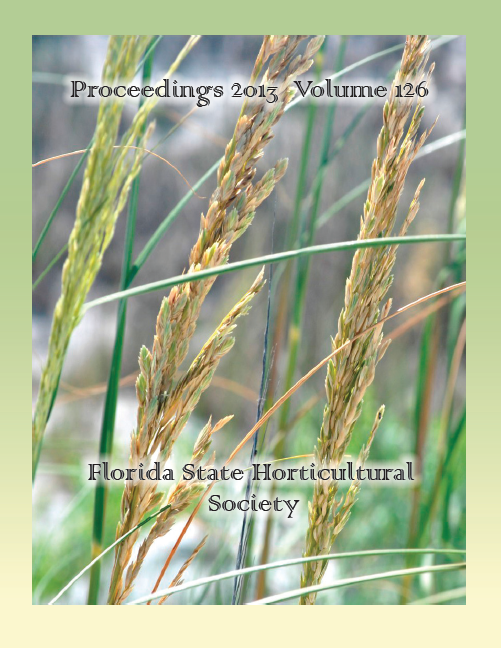Influence of Low Temperature Storage on the Postharvest Quality of Papaya Fruit (Carica papayaL.)
Abstract
Most of papaya (Carica papayaL.) produced in Brazil is exported to the United States and the European Union. Papaya fruit is commonly stored and transported at 10 ± 2 °C for 20 or more days. This period of cold storage can cause chilling injury in papaya fruit and a corresponding loss of economic value. This study aimed at identifying the effect of cold storage on papaya quality. Mature-green ‘Golden’ papayas were harvested in Brazil and handled in a packinghouse under the same conditions used for export. They were stored at 5 or 10 ± 2 °C for 20, 25, or 30 d and then transferred to 20 ± 2 °C for 3 d. Quality evaluations were performed at the end of every storage period. Firmness increased (P ≤0.05) after 20 d at 5 °C and ascorbic acid decreased (P ≤0.05) after 25 d at 5 °C and 10 °C. The soluble solids content (10 ± 1%) and color of papaya fruit (less than 25% yellow) was maintained throughout storage. Observed damage included the formation of granules in the pulp, peel depressions and detachment of peel from pulp. These results suggested that
papaya postharvest quality decreases when fruit were stored for 20 d at 5 °C or 25 d at 10 °C.

